
Sportscasting in Physical Education (Lee, 2011) is a class activity that students simulate sports broadcasting (e.g., students report, analyze, and comment on game play). It encourages problem solving (PS) learning for students. Scaffolding is the support with the intention of helping the student achieves his/her learning goals and contributes to problem solving. However, limited studies have examined if sportscasting with scaffolding is effective instructional strategies for PS. The purpose of this study was to examine effects of sportscasting with scaffolding on PS abilities, and on academic achievement. Participants were 46 college students. The static-group comparison design was used: an experiment group (N=26) with supportive scaffoldings (e.g., conceptual explanation, terminology dictionary, visual materials) and a control group (N=20) with reflective scaffoldings (e.g., organizing the environment, using appropriate cues to guide behaviors, and modeling). The results revealed that students in reflective scaffoldings had higher PS abilities than students in supportive scaffoldings. However, two groups were not statistically different in academic achievement. Sportscasting with instructional scaffolding promote a deeper level of cognitive skills and male students performed better than female students. The effective scaffolding types (Lewis, 2010) for sportscasting were discussed to help students to foster PS skills.

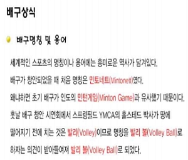
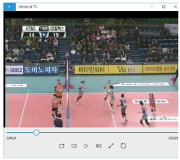
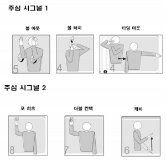
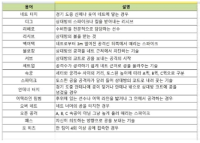
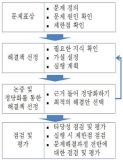
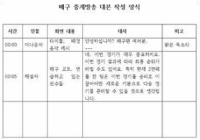
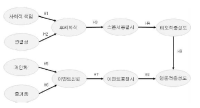
The purpose of this study was to develop a model of relationship intensification, identification formation, and loyalty achieved through mutual effect within participants of sports sponsorship. Through this, the study aims to provide guidance to businesses for establishing and developing sports sponsorships. In order to achieve the objective, two identification paths were used to understand the process of deepening consumer-sponsor relationship in professional volleyball title sponsorships. The target of this study is 'NH Nonghyup' a valleyball title sponsor in 2014-2015. A survey was conducted on 264 home crowd members of Korea Air, Samsung fire, Kepco, Woori card, OK saving bank and Hyundai capital based in metropolitan regions. Sampling method was Convenience Sampling Mode, and questionnaire has been structured to be self-administerd type. SPSSWIN Ver. 21.0 and AMOS 18.0 have been used for data processing. The results were as follows: Frist, the study showed that the connection between consumer-sponsor mutual effect positively influence "we-ness." "We-ness" in turn positively affected sponsor identification, and sponsor identification in turn positively affected attitudinal loyalty. Second, the personalization and enjoyment in consumer-event mutual effect positively affected event trust, and event trust in turn positively affected event identification, and event identification in turn positively affected behavioral loyalty. Third, attitudinal loyalty positively impacted behavioral loyalty.

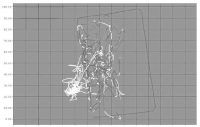
The purpose of this study was performance improvement through analysis of movement in elite field hockey players regarding positions using real-time GPS monitoring for compared training game and 2014 Incheon Asian Games. Fifteen elite women field hockey players (Defender: 4, Mid-fielder: 6, and Forward: 5) participated in this study. There were 2014 Incheon Asian Games Korean national team. Real-time GPS system analysis was completed during 10 training game appearances 5 2014 Incheon Asian Games appearances. The results of this study showed that in training game mid-fielder>forward>defender for 3, 4, 5, and 6 zone at speed zone by moving distance, in 2014 Incheon Asian Games forward>mid-fielder>defender for 6 zone at speed zone by moving distance. And moving distance by quarter increased all position in 2014 Incheon Asian Game more than training game. Therefore, These data might be useful to analysis of movement in field hockey players. Moreover improved performance and individual exercise ability by feedback for players distance, heart rate, and exercise trajectory. Thus, Gold-medal won at the 2014 Incheon Asian Games in field hockey.

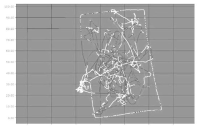

This study was to verify the structure of efficacy related to performance perceived by short-track athletes when playing a match. Therefore, 50 players answered open questionnaires and 200 players participated in construct validity verification, a total of 250 players of short-track members of national, business and university team were sampled during the research phase. The data was analyzed through the study procedures. The results were as follows: First, efficacy structure of players during the match were categorized into three groups as game managing strategy(including course management, race control, match management and selective attention ability), psychological control ability(including positive imagery, match competition, competitive spirit, ability to handle hardship, anxiety control, and patience), and physical usage of ability(including physique, endurance, and quickness). Second, the result of the first construct validity verification through exploratory factor analysis showed 7 factors in 29 items as game management, course management, psychological control, physical use, coping with hardship, speed control and psychological stability. Finally, as a result of confirmatory factor analysis, short-track self-efficacy showed the 5 factor in 15 items except for coping with hardship and psychological stability.

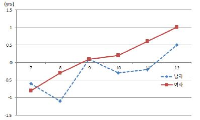
The aim of the study was to examine the tracking of body composition and physical fitness in boys and girls for 6 years. Thirty-seven boys and girls participated throughout the study. All measurements were performed annually. Body height, body weight, circumferences and skinfold thicknesses were measured and skeletal maturity was assessed. Body composition and bone mineral density were measured by DXA. Nine physical fitness tests were administered. Results of the study showed that there are significant interaction effects of time and group for body height(p<.01), waist circumference(p<.001), and skinfolds at triceps(p<.01), suprailiac(p<.01), thigh(p<.001) and medial calf(p<.01). All anthorpometric variables except skinfold thickness increased during the study period. Significant interaction effects of time and group were found for percent body fat(p<.05) and bone mineral density(p<.01). Percent body fat and fat tissue increased in boys from 7 to 11 years, then decreased in 12 years. Lean tissue(p<.001), bone mineral content(p<.001) and bone mineral density(p<.001) increased both in boys and girls throughout the study. There were significant interaction effect of time and group on sit and reach, standing long jump and sit-ups. In conclusion, percent body fat and fat tissue increased until 11 years, lean tissue and bone mineral density increased throughout the study both in boys and girls.


The purpose of this study was to investigate the relationship between depression and bone mineral density in Korean elder men (55+), and test mediating role of health behaviors. Korean National Health and Nutrition Examination Survey 2006-2011 data were analyzed. Bone mineral density was measured using DXA. Depression was measured by whether a participant had diagnosed depression, depressed mood lasted longer than 2 weeks, and/or suicidal thinking. Mediating health behaviors were serum vitamine D, calcium intake, high-risk drinking, endurance physical actiity, and resistance exercise. The associations among depression, health behaviors, and bone mineral density with demographic covariates were tested by linear regression, logistic regression, and path analysis. Diagnosed depression was not significantly associated with bone mineral density. Men who experienced substantial depressed mood and suicidal thinking has significantly lower bone mineral density than non-experienced counterparts. The effect of suicidal thinking on bone mineral density was mediated by endurance physical activity only. This study results suggest that elder men who experienced severely depressed mood and suicidal thinking were at-risk population for osteopenia. Also, physical activity intervention seems to be a priority to prevent osteoporosis comorbidity in depressed people.

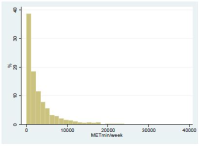
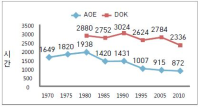
The aim of this study is to examine the directions of Physical Education Teacher Education (PETE) programs in Korea through the historical changes of each one PETE institute in England and Korea from the 1970s to 2010s based on academicisation. Document analysis and grounded theory were used to analyse historical sources and interviews. I identify four findings. First, the amounts of hours in curricula in both PETE courses have been reduced. Second, discipline knowledge in England was a first priority in the 1970s but has urgently reduced since the 1980s because of the growth and adoption of sport pedagogy. In Korea, discipline knowledge has still kept as a first priority for 40 years. However, professional knowledge in Korea has increased to enhance PETE since the middle of 2000s. Third, teaching experiences in England has increased by nearly double from 15 weeks to 32 weeks. In Korea, student have, and continue to participate in only four weeks of teaching experience. Fourth, education studies in England abolished in the 1990s. In Korea, they urgently increased in 2009. I conclude by confirming the need to study a structure and content of units of discipline knowledge and professional knowledge. I propose a system for selection of majors in the Department of Physical Education.

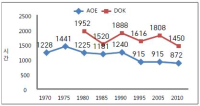
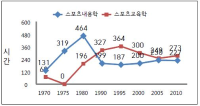
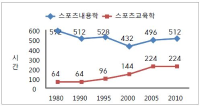
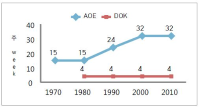
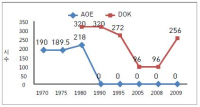
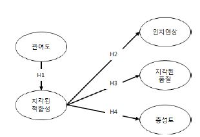
Although mega sporting events are becoming an effective means of brand communication, there has not been systematic research on involvement development and perceived fit enhancement through the sporting events. This study developed and tested a conceptual model delineating the impact of consumer involvement on perceive fit, and brand equity in mega sporting event context. Using quota sampling method, 1,847 participants (916 from IAAF; 931 from the F1) were recruited from several different cities in Korea during the mega-sporting events. Structural equation modeling were employed to examine the relationship between research constructs and test the model respectively. The study found that mega event involvement has a positive effect on perceived fit; and perceived fit influences brand equity(brand awareness, perceived quality and loyalty) toward event sponsor brands. The direct effects of involvement on sponsorship effectiveness (brand awareness, perceived quality and loyalty) did not have a significant effect on brand equity. The findings also reveal the mediating effect of perceived fit on brand equity.


This article aims to examine the research trend of sport history by analysing published research articles over the last decade in the Korean Journal of History for Physical Education, and suggest directions of research in sport history based on the results. We have reviewed a total of 264 articles relying on the analytic framework including the criteria of time period, method, nation, theme/topic, and purpose. The research findings are as follows. First, the post-Liberation period has been studied most often with 45.3%, followed by the Japanese Colonization period (20.2%), the Joseon Dynasty period (11.4%), the diachronic research (8.8%), the period from ancient times through Goryeo (8.1%), and the period of Enlightenment (6.2%). The results indicate that most recent studies in the journal unilaterally focus on the Modern and Contemporary history with 71.7%. According to the analysis result by research method, second, more than 90% of the studies have been conducted using qualitative methods while only 0.6% of the papers have adopted quantitative methods. The qualitative methods include textual analysis, participant observation, oral life story, and focus group interview. Textual analysis has been used most often with 74.5%. Oral life story has been second (22.5%), followed by participant observation (2.1%) and focus group interview (0.3%). The findings from this category show that it is still necessary to diversify research methods and vitalize interdisciplinary research. Third, in terms of nation, over 70% of the papers have studied about Korea, and European countries are the second most frequent region in the research trend (8.3%). The nation that follows is China with 6.4%. Although we analysed a Korean journal in sport history, the result exposes the lack of scholarly attention in the studies of sport history to world sport history reflecting comparative perspectives. By the criteria of theme/topic, fourth, genre has been studied most often with 31.7%, followed by figure (14.1%), facility/institution/organization (14.0%), system/policy/event (12.8%), philosophy/ideology/theory (6.7%), remains/relics/documentary material (6.3%), and domestic regions (5.4%). The results show that the recently published research articles have attempted to include a variety of genres in sports, play, and dance. While the topics for figure and facility/institution/organization also receive significant interest, it is limited that the studies mostly focus on male sport figures but female figures are barely explored. Even when female figures are researched, the attempts are observed only in the studies of dance. Fifth, the largest ratio of papers has had the research purpose of historical evolution (37.6%), followed by value/significance (20%), type/characteristic (15.5%), thoughts/ideology/theory (9.1%), origin (6.6%), suggestion/proposal/prediction (5%), comparison/correlation (5%), and concept/terminology (1.2%). The results expose that the studies tend to concentrate on historical evolution relying on chronological description while the research on concept/terminology is of little scholarly interest. Based on what we have found, it is identified that the recent studies in sport history have mostly focused on the historical evolution of a specific sport genre in the Korean Modern and Contemporary history using textual analysis. Consequently, the results suggest that researchers in sport studies need to put in additional effort to expand research topics and methods, and invite comparative perspectives involving inter/cross-national studies.
PURPOSE This study examined the biomechanical differences in running shoes with two midsole materials, ethylene-vinyl acetate (EVA) and polyether block amide (PEBA), and carbon fiber plate insertion. METHODS Ten recreational runners participated in the study and performed running trials on a 12m runway at a controlled speed of 3.89 m/s ± 5%. Biomechanical data were obtained for time-continuous variables of the metatarsophalangeal (MTP) joint (angle, moment, and power), as well as for discrete variables (push-off time, peak vertical impact force, peak anterior propulsion force, and timing of joint power transition). Data were analyzed using statistical parametric mapping for continuous data and the Wilcoxon signed-rank test for discrete variables (α = .05). RESULTS Compared with no-plate conditions, the EVA sole with plate significantly reduced push-off time, MTP joint range of motion, positive joint power, and peak anterior propulsion force, with an earlier timing of joint power transition (p < .05). In contrast, the PEBA sole with plate decreased MTP joint range of motion but increased plantar flexion moment, negative joint power, and push-off time (p < .05). Furthermore, under plate-inserted conditions, PEBA significantly increased plantar flexion moment, negative joint power, and push-off time, as well as exhibited a delayed timing of joint power transition compared with EVA (p < .05). CONCLUSIONS The interaction between midsole material and plate insertion causes complex variations in MTP joint energy management. Specifically, EVA shoes with a plate may facilitate rapid roll-off and promote swift turnover, thereby enhancing acceleration. In contrast, PEBA shoes with a plate may promote prolonged energy absorption, which could potentially reduce joint fatigue during long-distance running.